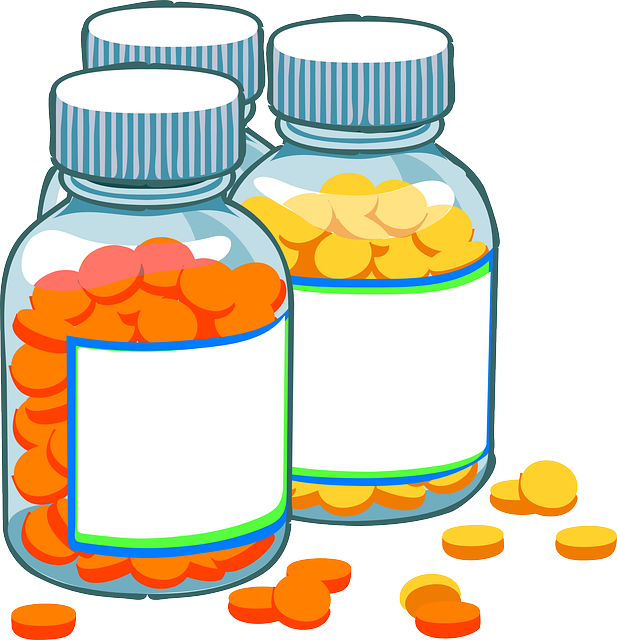GLP-1 receptor agonists (GLP-1 drugs) mimic natural hormones to effectively manage type 2 diabetes. They stimulate insulin production, suppress glucagon release, and improve gut-brain communication, leading to better glycemic control and potential weight loss. These medications offer a multifaceted approach by lowering blood pressure, improving lipid profiles, and reducing cardiovascular risks. While side effects like gastrointestinal issues are possible, GLP-1 drugs provide a convenient and powerful tool for diabetes management, enhancing patients' quality of life with numerous success stories to back their efficacy. Future research aims to explore monotherapy potential, new formulations, and personalized treatment approaches for better glycemic control.
“Unraveling the transformative power of GLP-1 receptor agonists, this comprehensive guide delves into their pivotal role in diabetes management. From understanding these innovative drugs to exploring their mechanism of action in lowering blood sugar, we dissect the scientific behind-the-scenes. Discover how GLP-1 drugs enhance insulin secretion, manage weight, and reduce cardiovascular risks. This article also navigates practical aspects, including administration methods and real-life patient success stories. Gain insights into ongoing research shaping future diabetes treatment prospects.”
Understanding GLP-1 Receptor Agonists and Their Role in Diabetes

GLP-1 receptor agonists are a class of medications that mimic the effects of the natural hormone glucagon-like peptide-1 (GLP-1). This hormone plays a crucial role in regulating blood sugar levels by stimulating insulin production and suppressing glucagon release, helping to lower blood glucose. By administering GLP-1 drugs, these synthetic agonists can effectively manage diabetes. They are particularly beneficial for individuals with type 2 diabetes, offering improved glycemic control alongside potential weight loss effects.
These agonists interact with specific receptors in the gut and brain, leading to increased insulin secretion after meals and reduced appetite. This dual action not only aids in blood sugar management but also contributes to a healthier lifestyle by potentially helping patients lose excess weight. As a result, GLP-1 drugs have emerged as a valuable addition to diabetes treatment plans, providing an innovative approach to glucose regulation.
How GLP-1 Drugs Lower Blood Sugar Levels

GLP-1 drugs work by mimicking a natural hormone in your body called glucagon-like peptide-1 (GLP-1). This hormone is secreted by specialized cells in your intestine after eating, particularly when you consume carbohydrates. One of its primary roles is to stimulate insulin secretion from the pancreas in a glucose-dependent manner, meaning it promotes insulin release only when blood sugar levels are high.
By activating GLP-1 receptors on pancreatic beta cells, these drugs enhance insulin production and suppress glucagon release. This dual action helps lower blood sugar levels by increasing insulin’s ability to take up glucose in the body’s cells while reducing the amount of glucose released from the liver. As a result, GLP-1 drugs effectively manage diabetes by improving glycemic control and contributing to better overall metabolic health.
Improved Insulin Secretion and Sensitivity

GLP-1 receptor agonists, a class of drugs designed to mimic the effects of the gut hormone GLP-1, offer significant advantages in diabetes management. One of their key benefits is their ability to enhance insulin secretion from the pancreas. This effect is particularly notable during meals, where GLP-1 drugs stimulate beta cells to produce more insulin, thereby improving glycemic control.
Additionally, these agonists can increase insulin sensitivity in peripheral tissues like muscles and fat. This means that when insulin is released, these tissues become more receptive to its signals, allowing for better glucose uptake and utilization. As a result, blood sugar levels are regulated more efficiently, providing a dual advantage in diabetes management by both increasing insulin production and improving its effectiveness.
Weight Management Benefits of GLP-1 Agonists

GLP-1 receptor agonists offer significant advantages in weight management for individuals with diabetes. These drugs, mimicking the effects of the natural hormone GLP-1, stimulate insulin secretion and suppress glucagon release, helping to lower blood sugar levels. Moreover, they increase feelings of fullness and reduce appetite, leading to decreased calorie intake and subsequent weight loss. This dual action not only improves glycemic control but also contributes to a healthier body composition by promoting fat loss while preserving muscle mass.
The weight management benefits of GLP-1 agonists extend beyond their direct effects on food intake and metabolism. By reducing body weight, these drugs can lower blood pressure, improve lipid profiles, and decrease the risk of cardiovascular diseases, which are often comorbidities associated with diabetes. This multifaceted approach to health improvement positions GLP-1 drugs as a valuable tool in comprehensive diabetes management, enhancing quality of life and overall well-being for patients.
Reducing Cardiovascular Risks: A Look at GLP-1's Impact

GLP-1 receptor agonists, a class of drugs designed to mimic the effects of the gut hormone GLP-1, offer more than just blood sugar control in diabetes management. One of their significant advantages is their potential to reduce cardiovascular risks—a crucial aspect often overlooked in diabetic care. These drugs have been shown to lower LDL (bad) cholesterol levels and reduce the risk of heart attacks and strokes, making them valuable tools in addressing the increased cardiovascular burden associated with diabetes.
By promoting weight loss and reducing blood pressure, GLP-1 drugs create a multi-faceted approach to improving overall health outcomes. This dual benefit of glycemic control and cardiovascular risk mitigation makes these medications an attractive option for healthcare providers aiming to holistically manage diabetes, preventing long-term complications and enhancing the quality of life for patients.
Potential Side Effects and Safety Considerations

While GLP-1 receptor agonists offer significant advantages in diabetes management, it’s crucial to acknowledge their potential side effects and safety considerations. These drugs, designed to mimic the effects of the natural hormone GLP-1, can cause gastrointestinal issues such as nausea, vomiting, and diarrhea. These symptoms are often more pronounced when starting treatment but usually lessen over time. Additionally, some patients may experience more severe reactions, though these are relatively rare.
Safety is paramount when considering GLP-1 drugs. Regular monitoring of blood sugar levels is essential to prevent hypoglycemia, especially when combined with other diabetes medications. Moreover, certain medical conditions like pancreatitis, kidney disease, or a history of gastrointestinal disorders may contraindicate their use. As with any medication, patients should discuss potential risks and benefits with their healthcare provider before starting GLP-1 therapy.
Administering GLP-1 Drugs: Injection vs Oral Forms

GLP-1 receptor agonists, a key class of diabetes medications, are available in both injectable and oral forms. The choice between these administration methods depends on various factors, including patient preference and treatment goals. Injecting GLP-1 drugs, typically via once or twice daily injections, offers several advantages. It provides precise dosing control, allowing healthcare professionals to tailor the treatment exactly to the patient’s needs. Additionally, injection forms can lead to faster onset of action, making them attractive for those seeking quicker blood glucose regulation.
In contrast, oral GLP-1 medications are convenient as they eliminate the need for frequent injections. However, their effect may be slower, and peak efficacy might take longer to reach compared to injections. Nonetheless, these oral forms are often preferred by patients due to their ease of use and improved adherence to treatment regimens. The choice between injection and oral GLP-1 drugs ultimately depends on what best suits the patient’s lifestyle, preferences, and diabetes management goals.
Real-Life Success Stories: Patient Experiences with GLP-1 Receptor Agonanists

In real-life scenarios, GLP-1 receptor agonists have emerged as powerful allies in the fight against diabetes. Patient experiences highlight their significant benefits, offering a glimmer of hope for improved glycemic control and enhanced quality of life. Many patients share stories of dramatic blood sugar improvements, with some achieving near-normal levels, a feat previously thought challenging.
These drugs not only help manage diabetes but also contribute to weight loss, an added advantage that makes them a game-changer for many. Patients often report increased energy levels and improved overall well-being, attributing these changes to the consistent blood sugar regulation provided by GLP-1 drugs. Such success stories serve as compelling evidence of the potential of this class of medications in transforming diabetes management.
Future Prospects and Ongoing Research in Diabetes Management

The future of diabetes management looks promising with ongoing research focusing on expanding the role of GLP-1 receptor agonists. Beyond their current use as a part of dual therapy for type 2 diabetes, scientists are exploring their potential in monotherapy and investigating new formulations for improved patient convenience. One area of interest is the development of long-acting GLP-1 drugs that could provide sustained blood glucose control throughout the day, potentially reducing the need for frequent injections or daily medication regimens.
Additionally, researchers are delving into the mechanism of action of these agonists to uncover novel therapeutic targets and enhance their effects. Studies are examining their role in improving insulin sensitivity, promoting beta-cell function, and preventing diabetic complications. As our understanding of GLP-1 drugs deepens, we can anticipate personalized treatment approaches tailored to individual patient needs, ultimately leading to better glycemic control and improved quality of life for those living with diabetes.
